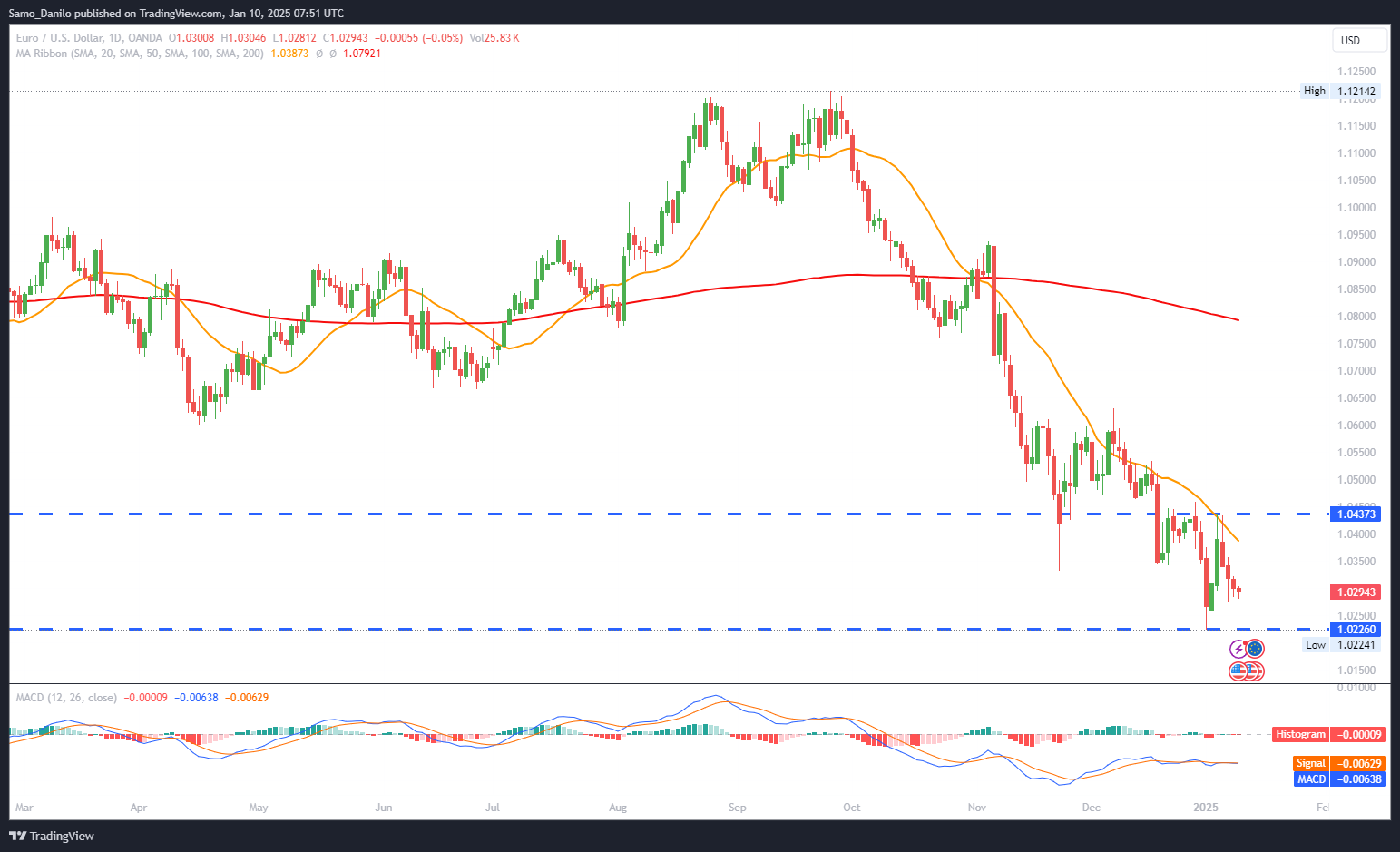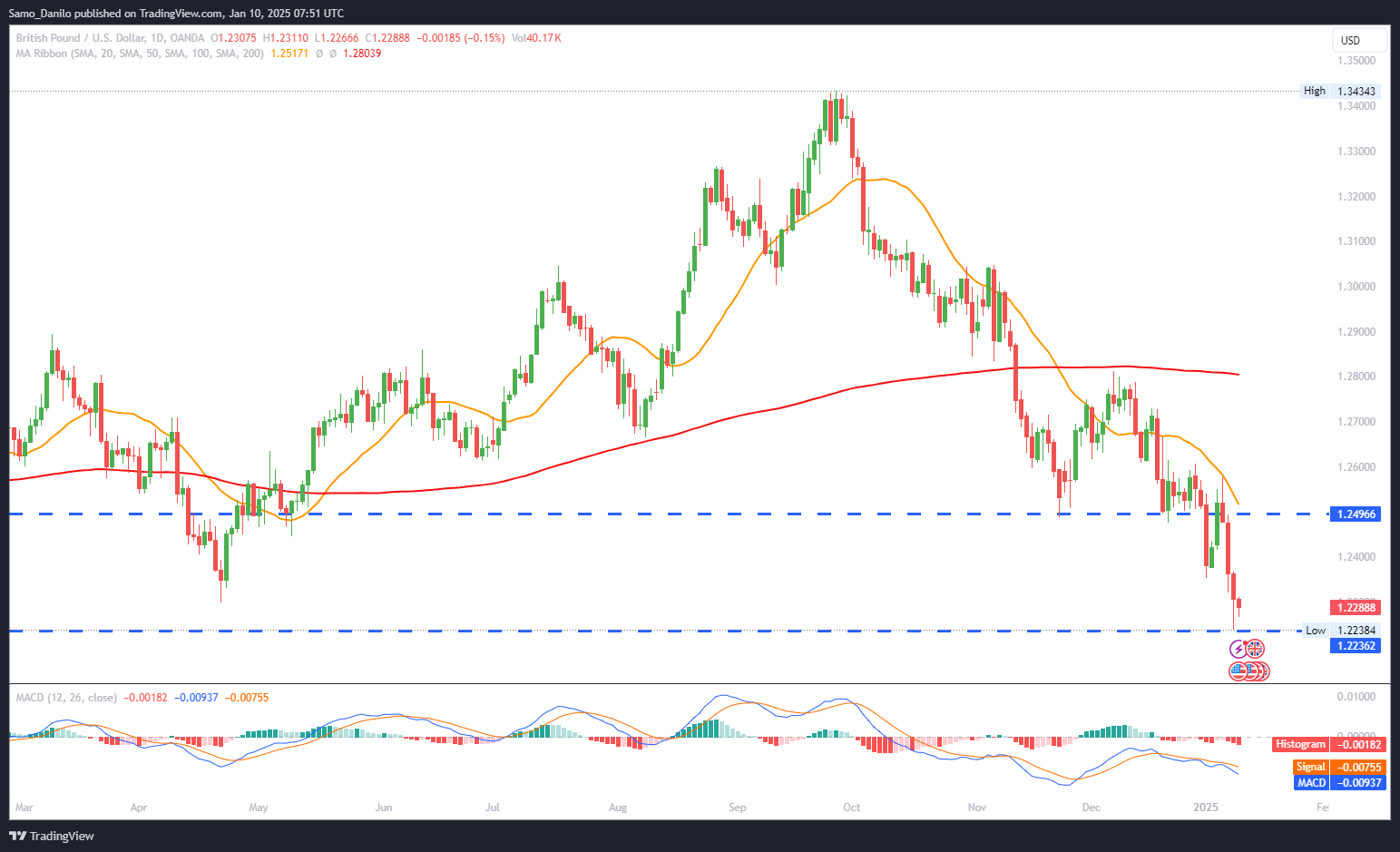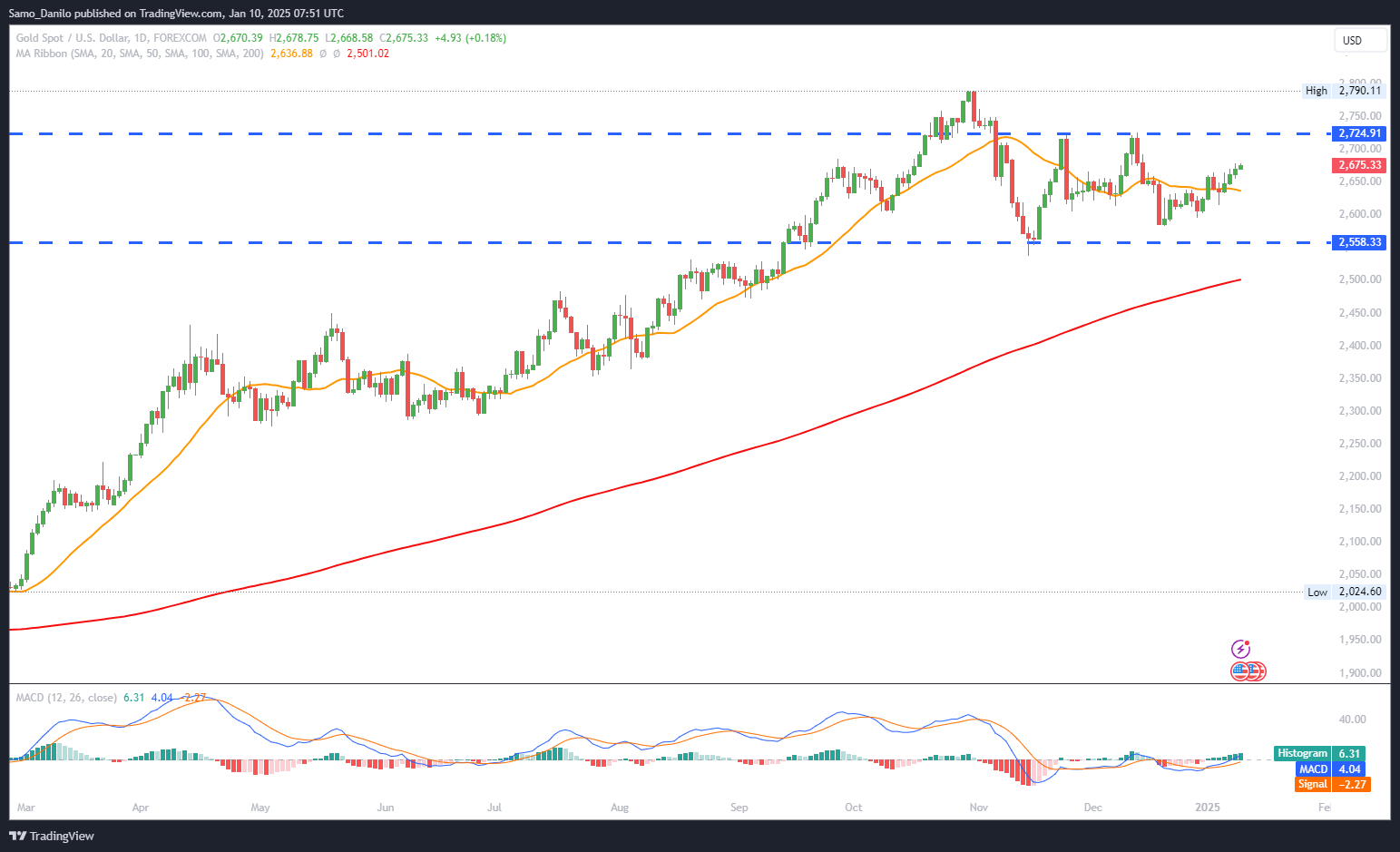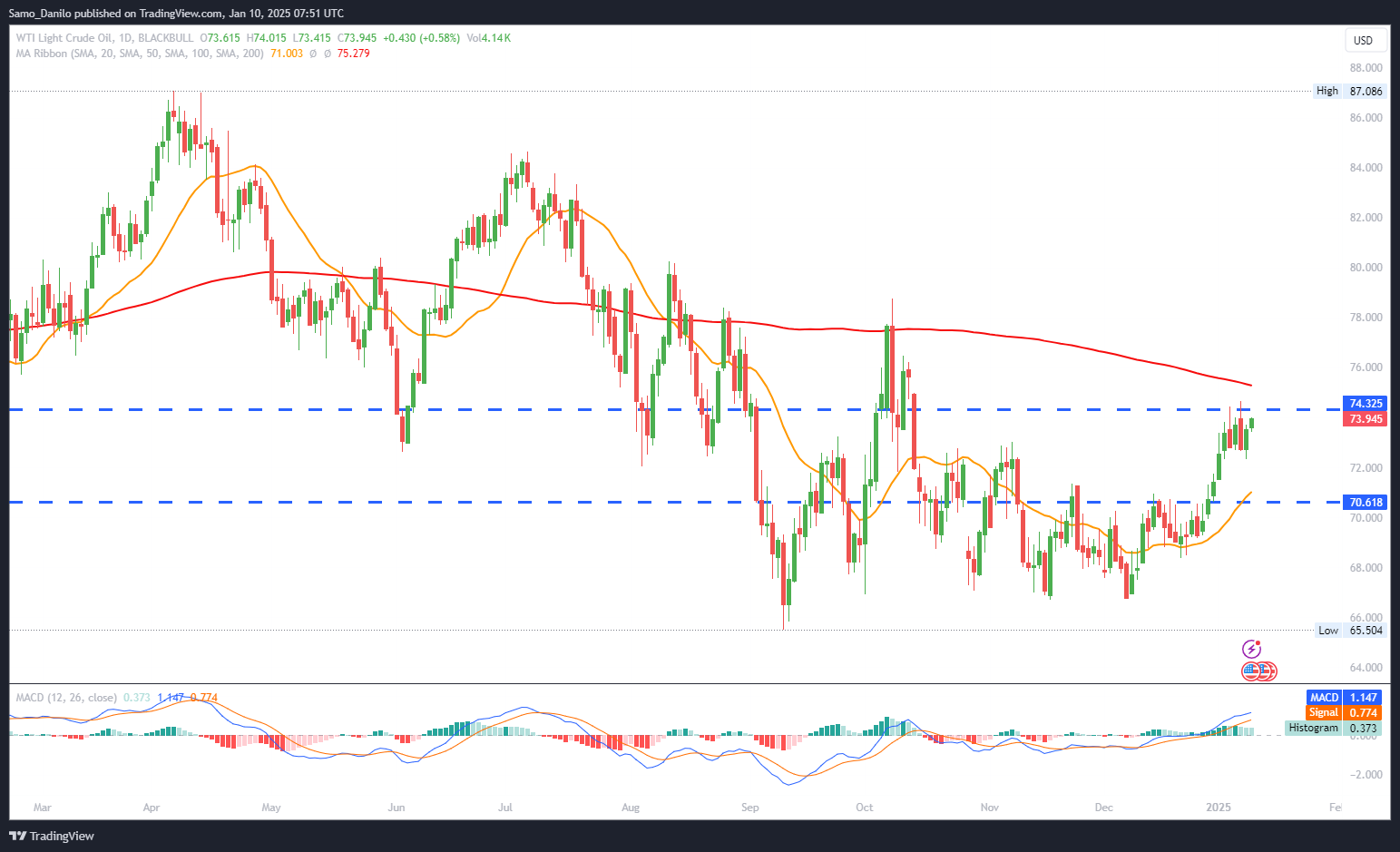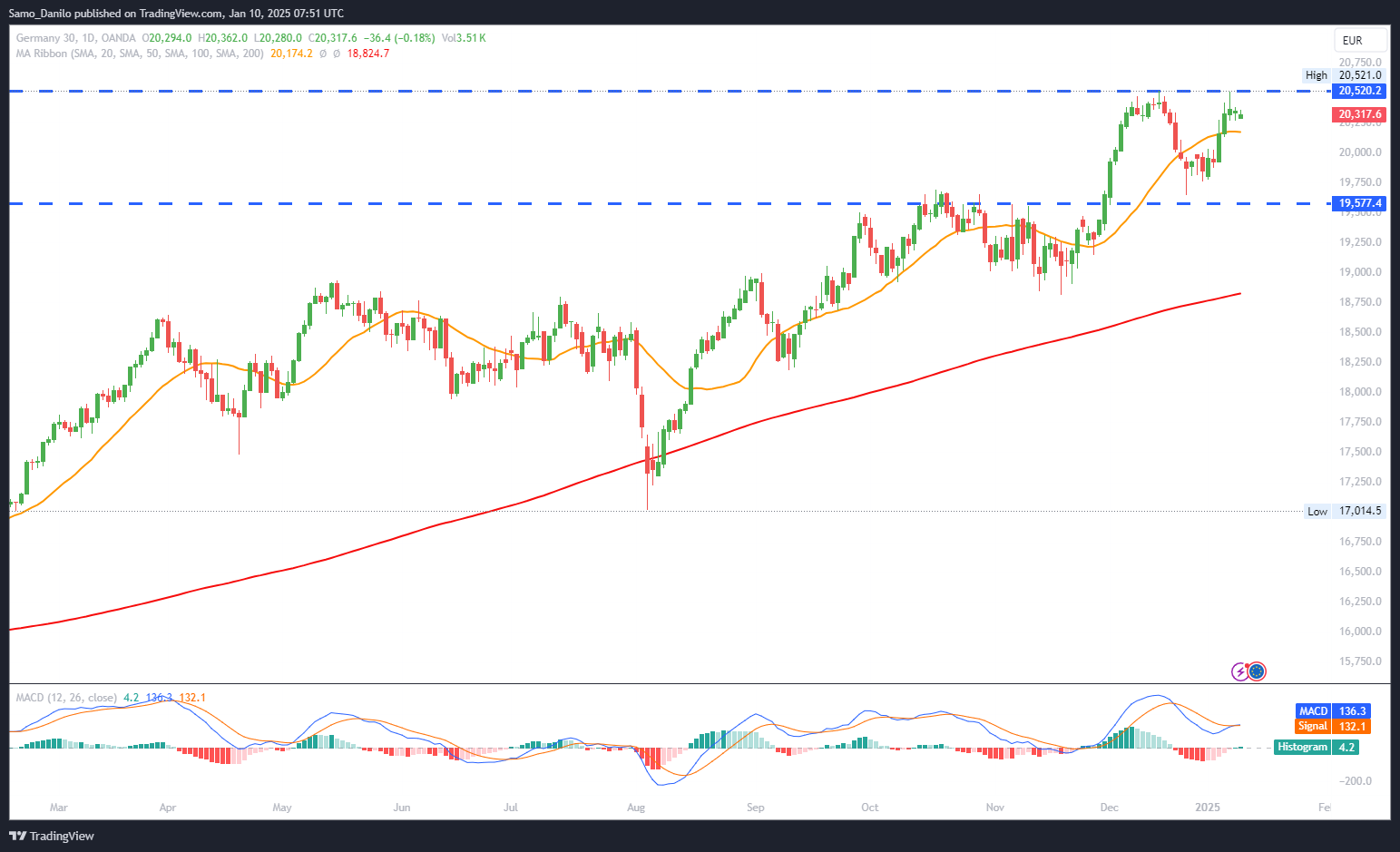EURUSD
- EUR/USD Price: The EUR/USD pair remains under slight pressure, trading below 1.0300 during Friday’s European session. The mild negative bias reflects cautious market sentiment as traders await key US employment data later in the day.
- Eurozone Retail Sales: Retail Sales in the Eurozone rose by 1.2% year-on-year in November, down from the revised 2.1% in October, as reported by Eurostat on Thursday. The slower growth failed to provide meaningful support to the Euro, keeping it subdued against the Greenback.
- ECB Rate Cut: Preliminary December Harmonized Index of Consumer Prices (HICP) data for the Eurozone has dampened expectations of an aggressive rate cut by the ECB. The data suggests that inflationary pressures remain under control, prompting the central bank to adopt a more measured policy approach.
- Fed Outlook: On Thursday, Boston Fed President Susan Collins emphasized the need for caution in rate reductions due to significant uncertainty in the economic outlook. This dovish tone from the Fed could influence near-term market dynamics, offering slight support to the Euro.
- US Nonfarm Payrolls: Traders are focused on the upcoming US Nonfarm Payrolls (NFP) report for December, which is expected to provide crucial insights into the health of the US labor market. A strong reading could reinforce USD strength, while a weaker outcome may limit further downside for EUR/USD.
Closing statement: EUR/USD remains under pressure as mixed economic data and cautious central bank policies weigh on sentiment. The pair’s direction will likely hinge on the US NFP report, with potential for heightened volatility depending on the labor market outcome.
GBPUSD
- GBP/USD Price: The GBP/USD pair continues its decline, falling below 1.2300 during Friday’s European session. The pair remains under pressure as the US Dollar maintains its strength, compounded by lingering concerns over UK bond market stability.
- UK Treasury: On Thursday, UK Chief Secretary to the Treasury Darren Jones reassured investors that UK financial markets are functioning in an "orderly way." However, this statement has done little to lift the Pound as concerns persist over economic and market vulnerabilities.
- FOMC Minutes: The latest Federal Open Market Committee (FOMC) Meeting Minutes revealed a consensus among policymakers that the disinflation process might take longer than anticipated. This is due to recent strong inflation readings and uncertainties surrounding President-elect Trump’s trade and immigration policies, supporting the US Dollar's strength.
- Fed Governor: Fed Governor Michelle Bowman highlighted that interest rates will likely remain on hold until inflation data clearly resumes its downward trend. This dovish stance provides some hope for a potential Pound recovery but is overshadowed by broader Dollar strength.
- NFP Data: All eyes are on the US Nonfarm Payrolls (NFP) report due later on Friday, which is expected to show a slight easing in job additions for December. Tight market volumes ahead of this data release have kept GBP/USD trading in a narrow range, limiting any significant recovery.
Closing statement: GBP/USD remains vulnerable below 1.2300, weighed down by Dollar strength and ongoing UK market concerns. The NFP report is likely to drive the pair’s next move, with risks tilted toward further downside if US labor market data surprises to the upside.
XAUUSD
- Gold Price: Gold price continues its upward momentum for the fourth consecutive session on Friday, supported by safe-haven demand. The 14-day Relative Strength Index (RSI) remains above the midline at 57.50, signaling sustained bullish potential for the yellow metal.
- Inflation Concerns: Fears of rising inflation linked to the potential trade and immigration policies of US President-elect Donald Trump are boosting gold’s attractiveness as an inflation hedge and a traditional safe-haven asset.
- Harker's Statement: Philadelphia Fed President Patrick Harker highlighted the likelihood of further rate cuts, though he emphasized a data-driven approach given the longer-than-expected timeline for inflation to return to 2%.
- Schmid's Statement: Kansas Fed President Jeffrey Schmid noted that inflation and growth are on track, warranting gradual and cautious policy adjustments.
- NFP Announcement: With the US Nonfarm Payrolls (NFP) report looming, traders remain cautious, refraining from aggressive positions in gold. Expectations are for the US economy to have added 160K jobs in December, down from the 227K reported in November.
Closing statement: XAU/USD remains buoyed by safe-haven demand, inflation fears, and cautious Federal Reserve commentary. The upcoming NFP report will be pivotal in determining the metal’s next directional move, with an upside bias prevailing in the short term.
CRUDE OIL
- WTI Price: West Texas Intermediate (WTI) crude oil is trading around $74.50 on Friday, showing little movement as a stronger US Dollar counterbalances concerns over potential supply disruptions.
- Inventory Data: Weekly reports from the American Petroleum Institute (API) and the Energy Information Administration (EIA) indicate a decline in US oil inventories, reflecting heightened energy demand due to harsh winter conditions across the US, Europe, and Asia.
- Ukraine Developments: Ukrainian forces launched a new surprise offensive in Kursk, inside Russia and were reported to have advanced in three waves using company-sized assaults backed by armored vehicles.
- Gaza Developments: The Israel Defense Forces stated that the commander of Hamas' Sabra battalion in Gaza City, his deputy and two elite Nukhba company commanders were killed in a series of airstrikes last week.
- US Employment Data: Oil traders are awaiting the US Nonfarm Payrolls (NFP) report, which is expected to show an increase of 160K jobs in December with an unchanged unemployment rate of 4.2%. A robust jobs report could strengthen the US Dollar further, adding pressure to crude prices.
Closing statement: WTI crude oil prices are caught between bullish supply-demand dynamics and bearish macroeconomic factors. The release of US NFP data later in the day will likely dictate the near-term direction, with geopolitical risks continuing to add volatility.
DAX
- DAX Price: The DAX slipped 0.06% on Thursday, adding to Wednesday’s 0.05% decline, closing at 20,216. Weak economic indicators from China and Germany, coupled with fears of US tariffs on EU goods, weighed on investor sentiment.
- Technical Indicators: The DAX sits well above the 50-day and 200-day Exponential Moving Averages (EMAs), affirming bullish price signals, despite Thursday’s flat trading.
- German Industrial Data: German industrial production rose by 1.5% in November, recovering from October’s 0.4% decline. However, the rebound appears fragile, following the steep 5.4% drop in factory orders reported for November, highlighting ongoing demand challenges.
- German trade data: Trade data showed imports contracting by 3.3% in November, raising concerns about weak domestic demand. A 2.1% rise in exports may indicate a temporary boost rather than a sustainable trend, reflecting broader global uncertainties.
- US Jobs Report: Investors are eyeing Friday’s US Nonfarm Payrolls (NFP) report for further cues. Forecasts suggest average hourly earnings will grow 4% YoY in December, with the unemployment rate expected to remain steady at 4.2%. Strong US data could influence market sentiment globally, including for European equities.
Closing statement: The DAX faces pressure from weak economic indicators and geopolitical risks, limiting upward momentum. Friday’s US jobs data will likely shape short-term market trends, while long-term risks from trade tensions and soft demand persist.
